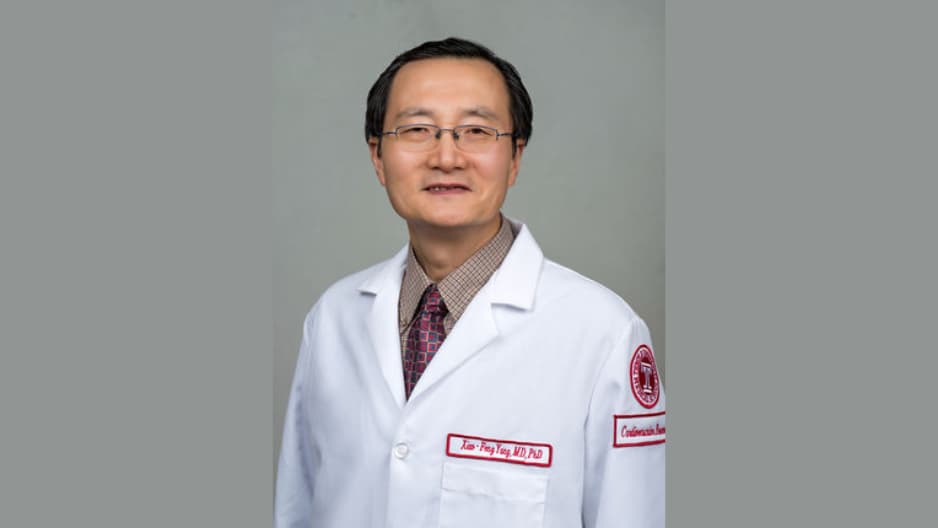The vast majority of chronic kidney disease patients—around 80 percent—die from cardiovascular complications. Yet, the biological link between declining kidney function and vascular health has long remained poorly understood. Researchers at the Lewis Katz School of Medicine at Temple University (Katz) have now uncovered a key piece to this connection: chronic kidney disease and high-fat diets work together to trigger dangerous inflammation in blood vessels. The discovery offers new clues for preventing cardiovascular disease in at-risk patients.
The new study, published online in June in Redox Biology, describes a key mechanism involving harmful byproducts that build up when kidney function declines. These byproducts, known as uremic toxins, activate specialized sensors in cells called uremic toxin receptors. When combined with metabolic stress caused by high cholesterol, these activated receptors fuel inflammation and overactivate the immune system—key drivers in the development of cardiovascular disease.
“Our work uncovers a key mechanism linking chronic inflammation to metabolic stress induced by increased lipid levels and kidney dysfunction,” said Dr. Xiao-Feng Yang, MD, PhD, FAHA, senior investigator on the study and professor and associate director of the Lemole Center for Integrated Lymphatics at the Lewis Katz School of Medicine.
The study focused on a gene known as NR1H3, which previous research has shown to be overactive in the blood vessels and immune cells of people with chronic kidney disease. Activity of this gene is triggered by oxysterols—oxidized lipids derived from cholesterol that accumulate in the presence of kidney dysfunction and that are known to promote inflammation.
“Little is known, however, about how lipids and NR1H3 influence chronic kidney disease or worsen cardiovascular disease,” Dr. Yang explained. “We aimed to understand how they are connected.”
For their latest work, Dr. Yang’s team used a mouse model of chronic kidney disease in which they fed the mice a high fat diet to fuel the development of cardiovascular disease. After several months on the diet, the researchers examined the animals’ aorta, the body’s largest artery. Using RNA sequencing, they evaluated changes in the expression of inflammatory genes in aortic tissues and then compared these changes to inflammatory gene expression in aortas from healthy mice and from mice with only chronic kidney disease or a high fat diet.
The team discovered that many more inflammatory genes are upregulated in animals with a combination of kidney disease and increased lipid levels resulting from high fat intake. “The aortas from these animals indicated high levels of inflammatory signaling, with an influx of inflammatory cells and damage to the aortic structure,” Dr. Yang explained.
In particular, NR1H3 was markedly upregulated, as was the expression of a novel protein, YBX2. YBX2 was found to serve an essential role in preventing oxidative stress. Further analyses revealed that when its levels are decreased, levels of reactive oxygen species (ROS) increase in cells. Higher levels of YBX2, on the other hand, suppress ROS, along with the activity of more than two dozen proinflammatory genes.
“Our findings reveal how changes in cell metabolism and increased oxidative stress can activate damaging pathways in blood vessels,” Dr. Yang said. “This helps explain why inflammation and immune dysfunction are so common in people with both kidney disease and high cholesterol.”
Next, the team plans to explore how targeting NR1H3, YBX2, or their related pathways might help prevent inflammation and blood vessel damage in chronic kidney disease. These discoveries could eventually lead to new treatments not only for kidney disease-related cardiovascular complications, but also for other inflammatory conditions linked to high cholesterol and aging.
Other Katz researchers who contributed to the new study include Yifan Lu, Yu Sun, Fatma Saaoud, Keman Xu, Ying Shao, Baosheng Han, and Xiaohua Jiang, the Lemole Center for Integrated Lymphatics and Vascular Research, Department of Cardiovascular Sciences; Sadia Mohsin, the Aging + Cardiovascular Discovery Center, Department of Cardiovascular Sciences; Huaqing Zhao, the Center for Biostatistics and Epidemiology, Department of Biomedical Education and Data Sciences; and Hong Wang, the Centers of Metabolic Disease Research and Thrombosis Research Center, Department of Cardiovascular Sciences; as well as Laisel Martinez and Roberto I. Vazquez-Padron, the Department of Surgery, Leonard M. Miller School of Medicine, University of Miami, Miami, Florida.

